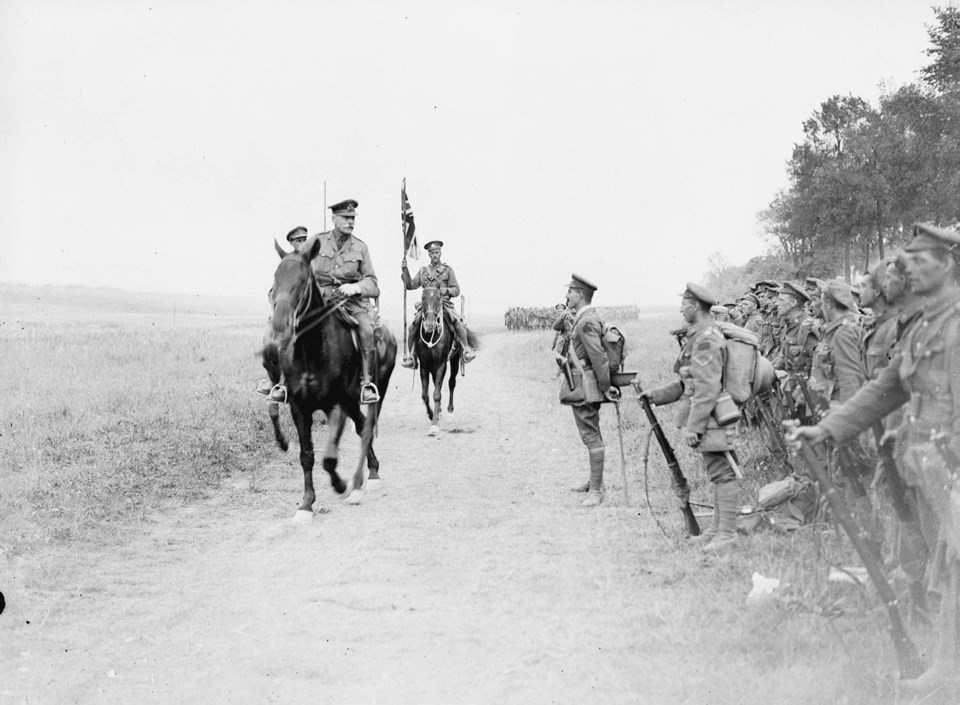“Something big happened on Aug. 8,” he said. We were in a small war cemetery in northwestern France. Most of the 200 or so headstones showed carved maple leaves, indicating Canadian soldiers. Most listed “8 August 1918” as date of death.
“It was the start of the Battle of Amiens,” I said.
For four years, the First World War had been fought from parallel lines of trenches linking the Swiss border to the English Channel. Costly battles traded metres of ground back and forth between armies.
But that changed on Aug. 8, 1918. Canadian, Australian, British and French troops attacked German lines east of Amiens. The four-day battle lifted the war out of the trenches and launched a sustained fight across open ground for the first time since 1914.
Canadian troops spearheaded the attack.
The German Army so respected and feared the Canadians, it kept tabs on where they were posted, using that intelligence to anticipate Allied battle plans. Knowing that, in the days before the Amiens fight, Allied High Command deployed some Canadian battalions north to the Ypres area, where they were instructed to be visible. The rest of the Canadian Corps travelled to the Amiens area at night and hid in the woods during the day, preparing for the attack.
At 4:20 a.m., on Aug. 8, the guns started firing. Shortly after, the infantry attacked, following a creeping curtain of shellfire toward the first line of German trenches.
Flanked by the Australians and a large formation of British tanks, the Canadians drove deep into German defences. By midday, they had advanced more than 12 kilometres and captured 15,000 prisoners and 400 artillery guns. The Canadians created such a breach in the German defences, German chief-of-staff General Erich von Ludendorff called Aug. 8 the black day of the German army.
The Battle of Amiens marked the beginning of the end of the First World War — the last 100-day push across eastern France that saw the retreat, then surrender, of the German Army and the signing of the armistice on Nov. 11.
Today, as you drive southeast from Amiens, you can track the battle’s long-ago progress, cemetery by cemetery. Among these, the war cemetery at Beaucourt-en-Santerre contains the graves of 77 Canadian solders, and those near Hangard, of 72, 61 and 219 Canadians. The Villers-Bretonneux Military Cemetery has 276 Canadian graves, while 118 Canadian soldiers and personnel are buried at Caix. Most of the headstones record Aug. 8, 1918, as the date of death.
Cemeteries farther to the southeast at Le Quesnel and Bouchoir document the Canadians who died in action on Aug. 9, 1918.
And so the story unfolds in a southeasterly direction, ending Aug. 11, when the Battle of Amiens ended.
Two weeks later, the Canadians fought again, farther north, from Arras. From Monchy-le-Preux east across the Canal du Nord to the town of Cambrai, then northeast to Valenciennes, war cemeteries and monuments dot the countryside, recording the fighting and lives lost from Aug. 16, 1918, to Nov. 11, 1918. There is Manitoba Cemetery, Ontario Cemetery, Toronto Cemetery and Canada Cemetery.
There are graveyards named for nearby towns and graveyards named for the first soldier buried within. Some lie next to roads, some require driving over farm tracks. Some are community and church cemeteries, with sections set aside for Commonwealth soldiers.
Some contain thousands of graves, others only a few.
More than 6,800 Canadian and Newfoundland soldiers, medical staff and support staff lost their lives in the fighting during the war’s last 100 days — about one-10th of the Canadians and Newfoundlanders killed throughout the entire 51-month war.
Tidy stone or brick walls enclose the cemeteries. Maples shade the graves. Each graveyard includes the Commonwealth War Graves Commission’s Cross of Sacrifice. Larger cemeteries contain its Stone of Remembrance.
Cross, stone and simple headstones distinguish commission cemeteries. The commission maintains graves in more than 150 countries of 1.7 million men and women of the Commonwealth forces who died in the First and Second World Wars.
In Greater Victoria, the Esquimalt Veterans’ Cemetery contains 23 First World War Commonwealth war graves, and Ross Bay Cemetery in Victoria contains 133 First World War graves. In Ross Bay, the simple headstones are gathered in rows in the cemetery’s southeast corner, around the Cross of Sacrifice.



